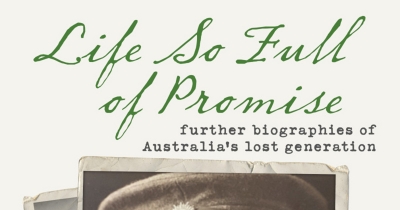Scribe
Empress of the Nile: The daredevil archaeologist who saved Egypt’s ancient temples from destruction by Lynne Olson
by Theodore Ell •
Young Rupert: The making of the Murdoch empire by Walter Marsh
by Jonathan Green •
Life So Full Of Promise: Further biographies of Australia’s lost generation by Ross McMullin
by Raelene Frances •
Bulldozed: Scott Morrison's Fall and Anthony Albanese's Rise by Niki Savva
by Mark Kenny •
The Long Alliance: The imperfect union of Joe Biden and Barack Obama by Gabriel Debenedetti
by Varun Ghosh •
Lee's Law by Chris Lydgate & The Mahathir Legacy by Ian Stewart
by Peter Mares •










